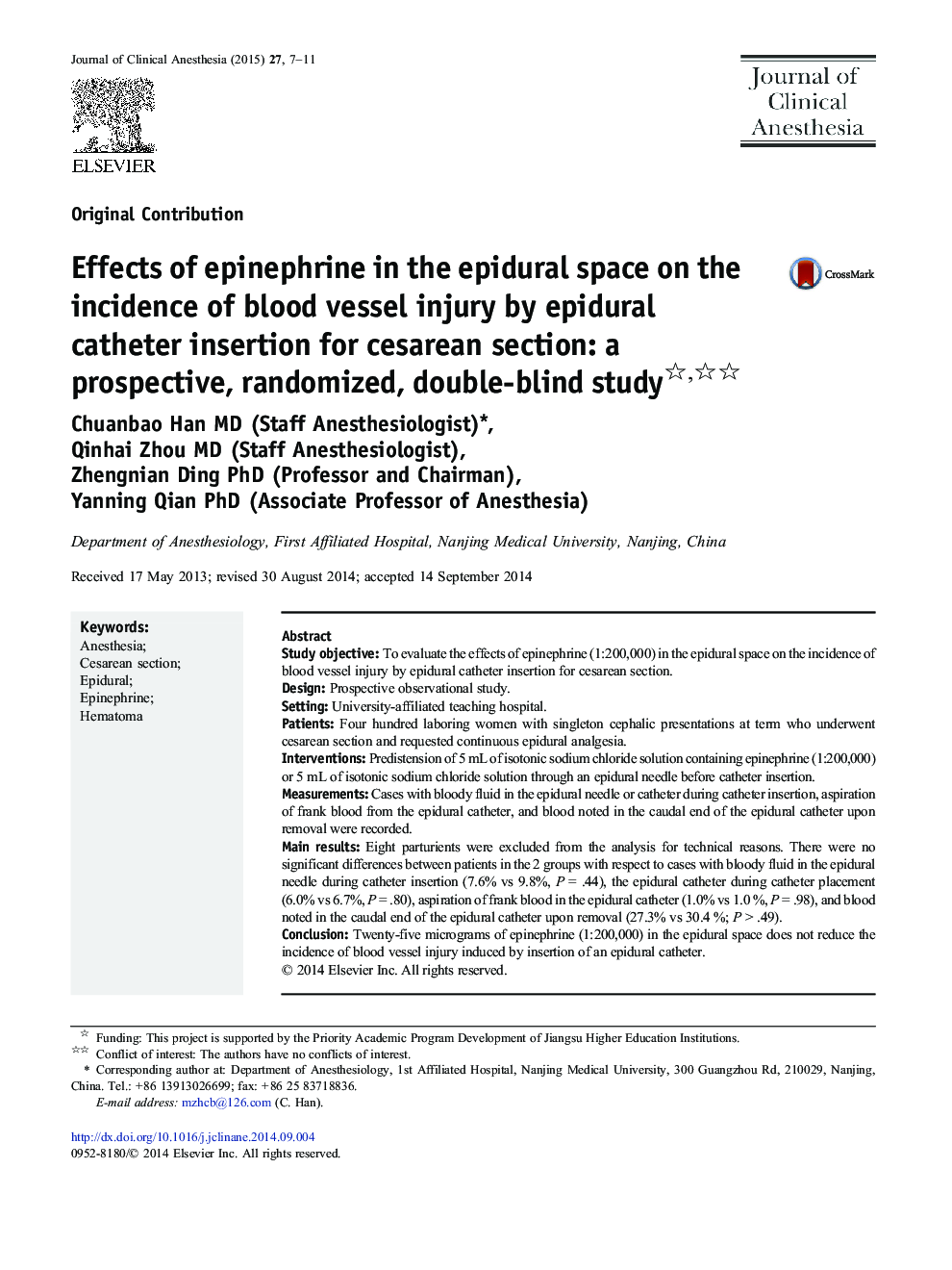| Article ID | Journal | Published Year | Pages | File Type |
|---|---|---|---|---|
| 2762244 | Journal of Clinical Anesthesia | 2015 | 5 Pages |
•There are extensive vascular plexuses in the epidural space which may be punctured during epidural puncture, especially in parturients.•Epidural venous injuries may lead to local anesthetic-induced cardio- or neurotoxicity, a poor anesthetic effect, and even the occurrence of epidural hematomas.•It has been theorized that epinephrine (5 μg/mL) in the epidural space may vasoconstrict the epidural veins and possibly reduce the incidence of injuring the epidural vascular plexus before insertion of the catheter.•The purpose of this article is to evaluate the effects of epinephrine (1:200,000) in the epidural space on the incidence of blood vessel injury by epidural catheter insertion for cesarean section.
Study objectiveTo evaluate the effects of epinephrine (1:200,000) in the epidural space on the incidence of blood vessel injury by epidural catheter insertion for cesarean section.DesignProspective observational study.SettingUniversity-affiliated teaching hospital.PatientsFour hundred laboring women with singleton cephalic presentations at term who underwent cesarean section and requested continuous epidural analgesia.InterventionsPredistension of 5 mL of isotonic sodium chloride solution containing epinephrine (1:200,000) or 5 mL of isotonic sodium chloride solution through an epidural needle before catheter insertion.MeasurementsCases with bloody fluid in the epidural needle or catheter during catheter insertion, aspiration of frank blood from the epidural catheter, and blood noted in the caudal end of the epidural catheter upon removal were recorded.Main resultsEight parturients were excluded from the analysis for technical reasons. There were no significant differences between patients in the 2 groups with respect to cases with bloody fluid in the epidural needle during catheter insertion (7.6% vs 9.8%, P = .44), the epidural catheter during catheter placement (6.0% vs 6.7%, P = .80), aspiration of frank blood in the epidural catheter (1.0% vs 1.0 %, P = .98), and blood noted in the caudal end of the epidural catheter upon removal (27.3% vs 30.4 %; P > .49).ConclusionTwenty-five micrograms of epinephrine (1:200,000) in the epidural space does not reduce the incidence of blood vessel injury induced by insertion of an epidural catheter.
